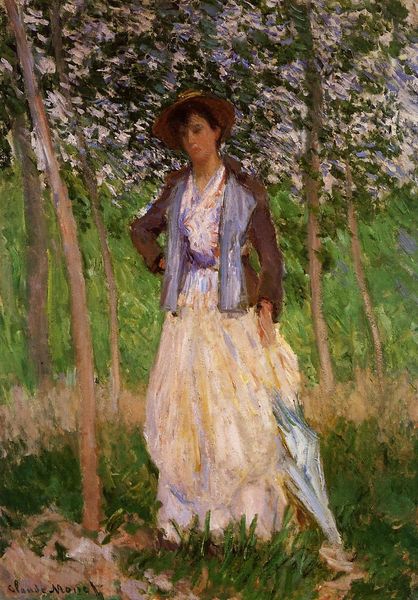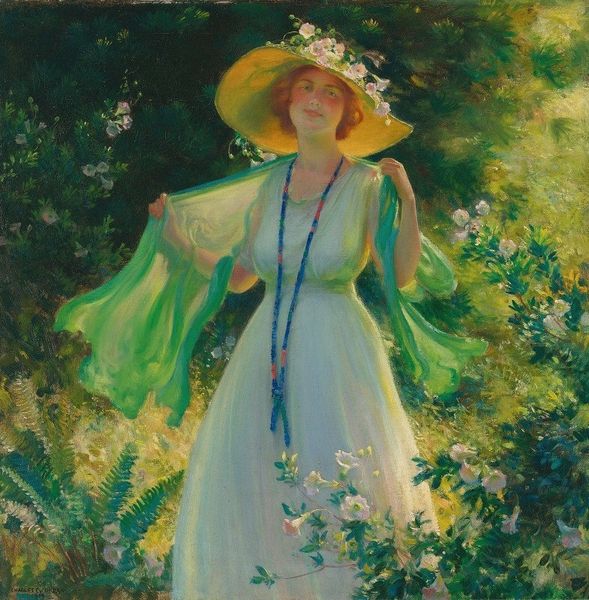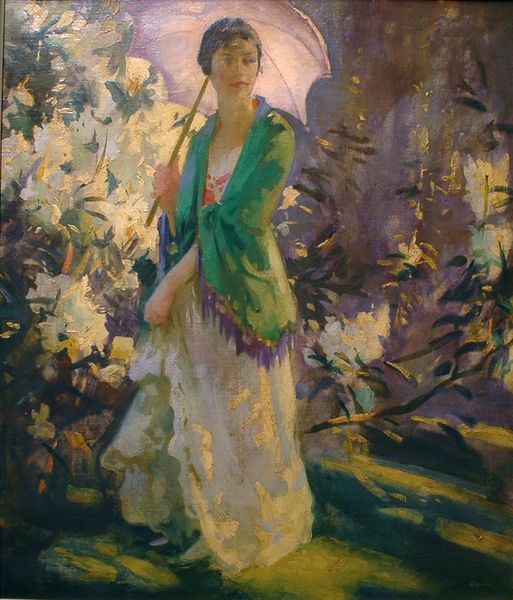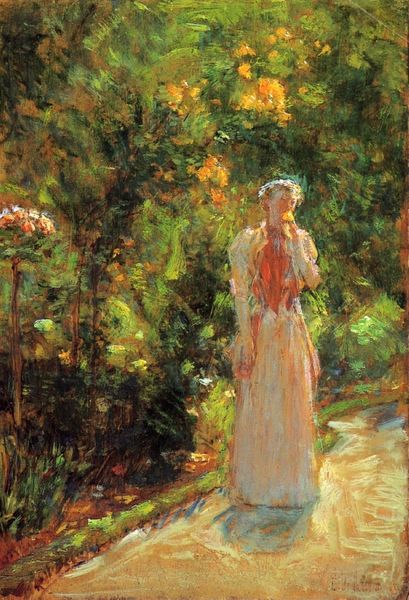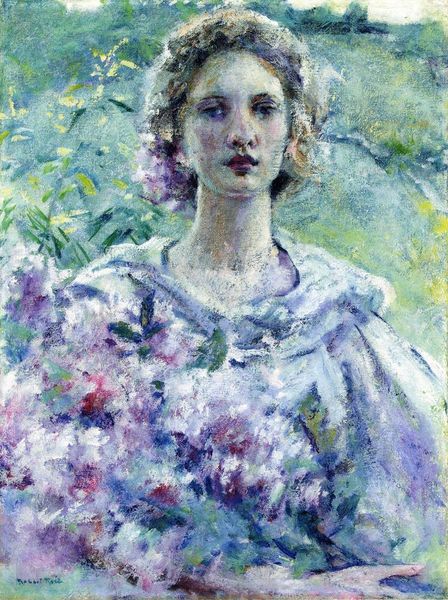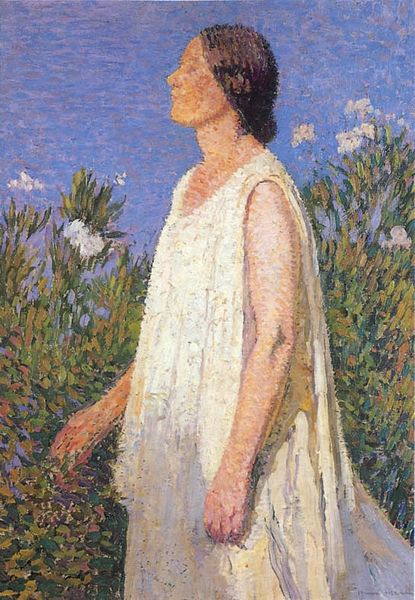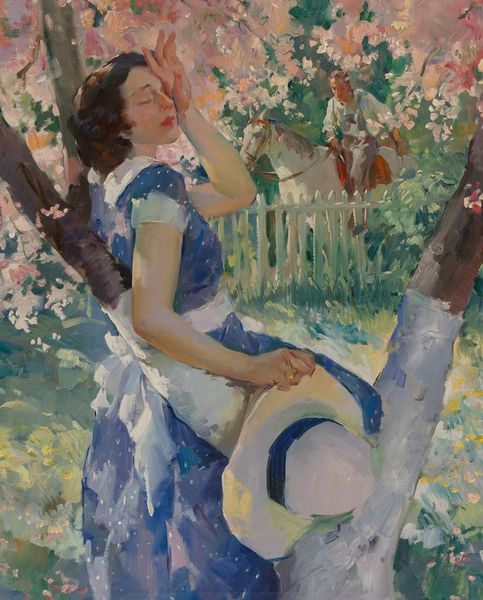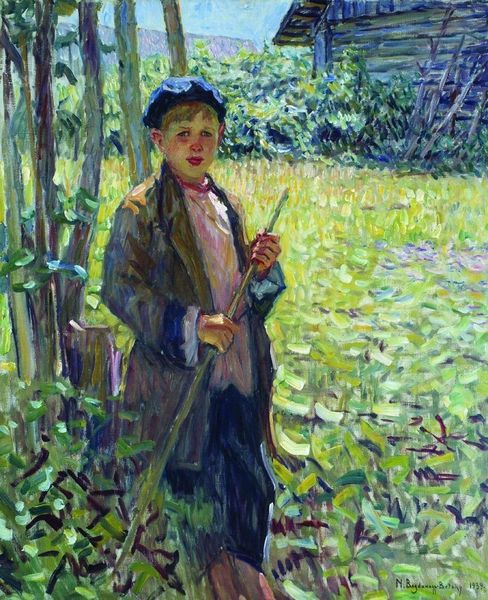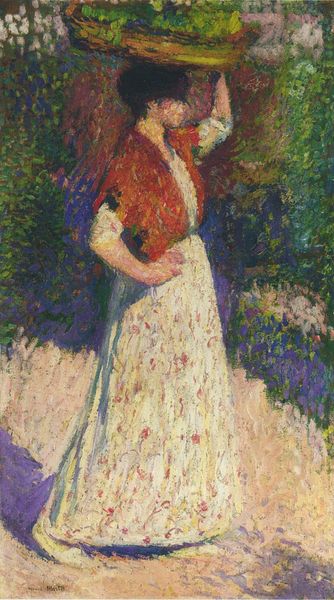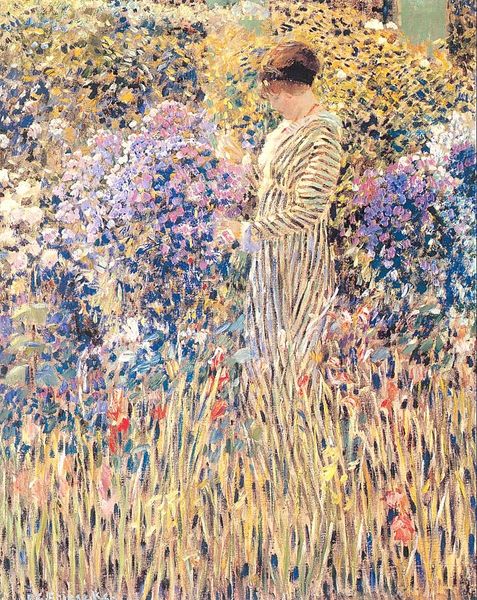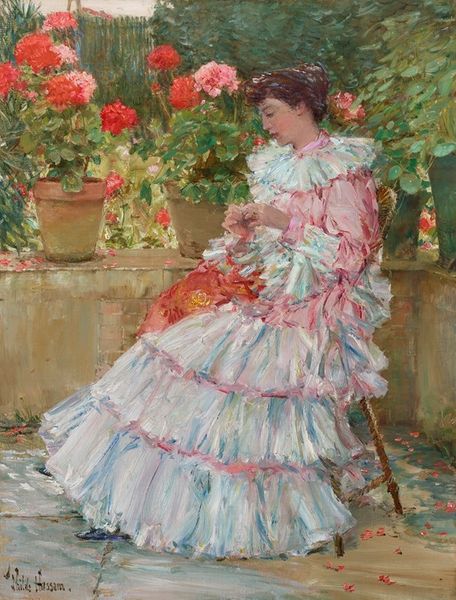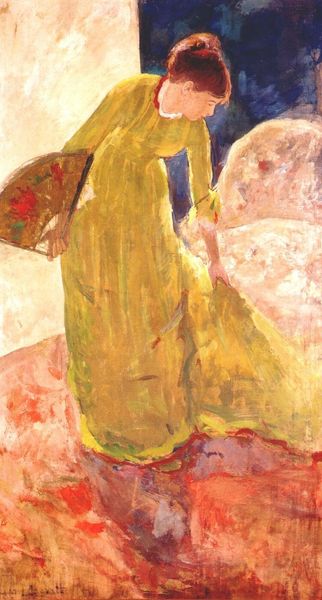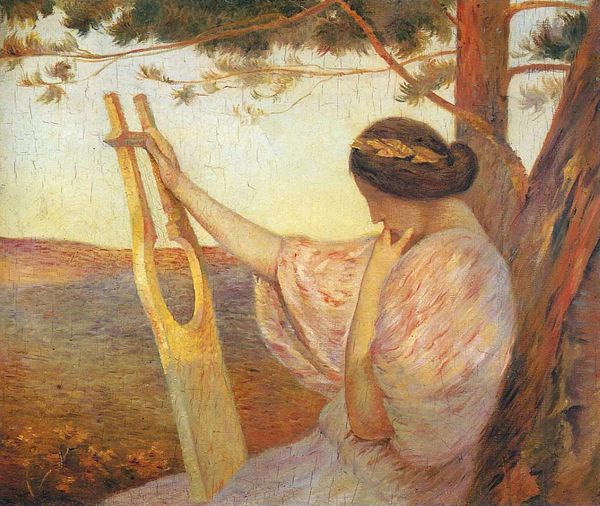
Dimensions: 60.96 x 48.26 cm
Copyright: Public domain
Editor: This is "The Blue Kimono," painted in 1910 by Rose O'Neill. The textures of the foliage and the woman's garment really strike me; there is an intriguing blur between her form and the landscape she is interacting with. What catches your eye? Curator: I think what’s fascinating here is the convergence of the artistic vogue for Japonisme with the changing social roles of women in the early 20th century. O’Neill, best known for creating the popular "Kewpie" characters, positions this figure within a broader narrative. How does the kimono, typically associated with Japanese culture, function here? Is it an expression of artistic freedom, or something more complex? Editor: I hadn’t considered that at all. I guess I assumed it was a straightforward artistic choice, simply to capture the beauty of the garment within the setting. Do you think it was deliberately referencing other paintings of the time? Curator: Very likely. Think about artists like Monet and his paintings of his wife in kimonos. The Orientalist trend allowed for an exploration of female identity through exoticized lenses, but O’Neill was American and commercially successful in her own right, so was the "exotic" truly that? Her position might let her be subversive with social norms through popular imagery. How might the painting’s display – where and for whom it was intended – change its interpretation? Editor: So, its meaning is really dependent on who was viewing it, and the context they brought to the image. The setting, a lush outdoor scene, adds another layer, further intertwining the woman with nature. It isn’t just about her… It’s about a broader societal landscape. Curator: Exactly. It reveals the layers of influence and the socio-political landscape in which O'Neill operated. I have certainly been challenged to think further about the implications. Editor: This was illuminating. Seeing the work through its cultural history, made me question some of my basic assumptions and brought new insight into how an image could be received then, and now.
Comments
No comments
Be the first to comment and join the conversation on the ultimate creative platform.
